A LENS FOR EVERY SHOT
How to Choose the Right Lens for your DSLR Camera
When it comes to taking the perfect picture, the right lens for your DSLR camera is just as important as the camera body.
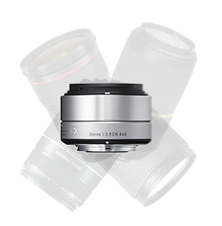 With so many lenses to choose from that come in a variety of sizes, prices, shapes, and purpose, it is important to consider several factors:
With so many lenses to choose from that come in a variety of sizes, prices, shapes, and purpose, it is important to consider several factors:
- From what distance will I be taking pictures?
- What is my subject? Is it stationary or moving?
- What do I need to know about "sensor sizes"?
- What are the different types of lenses?
- Am I going to be shooting in low-light environments?
Depending on how you answer the above questions effects the type of lens needed for optimal shooting. It is important to understand the different types of lenses for different situations before deciding what lens will best fit your needs.
The Different Types of Lenses
Standard & Multi-Use Lenses:
Standard lenses that can be used in various environments and have a lot to offer for novice or intermediate photographers alike.
Ask yourself the following questions when considering a standard or multi-use lens:
- Am I looking for image quality or ease of use?
- Do I shoot primarily inside or outside and will the lens perform adequately in each setting?
- Will it be difficult for me to carry more than one lens?
Recommended For:
Skill Level: Beginner and Intermediate Photographers
Best For: Events, Portability
Telephoto Lenses
Zoom and telephoto lenses use optical zoom to get quality, close-up images of your subject. Optical zoom uses the focal length of the lens to zoom in to your subject, whereas digital zoom uses software to expand and crop an area of the image, resulting in lower image definition
Things to consider when buying a zoom lens:
- Am I buying this lens for a specific purpose, such as sporting events or nature photography?
- Will I be using this lens for photos at a variety of distances? If so, a lens with a wide range of focal length, such as an 18-200mm, would be more useful than a lens with a focal length of 70-200mm. The wide range of focal length (lets the lens? Needs something like that) is able to take images at a much closer distance, while still extending to the 200mm focal length.
- The depth of field on telephoto lenses makes selective focus much easier to achieve. Selective focus is when the subject in the foreground is crisp and sharp, and the background is blurred, calling attention to the foreground or background in the process.
Recommended For:
Skill Level: Beginner and Intermediate Photographers
Best For: Events, Portability
Fixed focal-length lenses
Fixed focal-length lenses, also referred to as prime lenses, allow you to focus on a fixed focal point but have no zoom options. This allows for a higher level of image quality, but lacks flexibility in zoom settings. These lenses are usually for experts who have a wide range of lenses for specific purpose such as nature photo shoots or photographing products in a studio. Fixed focal lenses offer:
- Specialist Macro lenses.
- Specialist Micro lenses.
- Fixed distance lenses for specific photo shoot preferences.
Recommended For:
Skill Level: Intermediate and Advanced Photographers
Best For: Products, Landscapes, Portraits
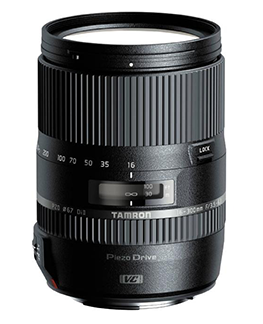 Macro Lenses
Macro Lenses
Macro lenses are specialty lenses used for extreme close-up photography. This lens is usually best for small objects in which the size of the subject in the photograph is greater than its actual size. These lenses are ideal for photographers with this specific need, whether they are novice or expert.
- Have variable focal length for macro subjects
- Are ideal for product photography focusing on small objects such as birds, insects, or flowers.
- Allow for additional working distance when required by the photographer
Wide-Angle Lenses:
Wide-angle lenses are generally used when the photographer wants to capture more of the scene or landscape in the photograph. This lens can be used in landscape, architectural, and interior photography where the photographer has a finite use of space to photograph the subject. This lens is most suitable for intermediate to expert photographers with its specific capability and needs.
Fish-Eye Lenses:
Fish eye lenses are often used when the photographer needs a wide-angle lens that allows for visual distortion associated with panoramic images. Fish-eye lenses use lines of perspective to produce an enhanced "distorted" image with a characteristic convex appearance. This lens can is recommended for intermediate to expert level photographers.
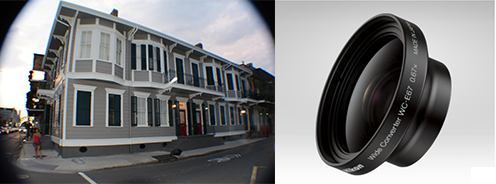
Tilt-Shift Lenses: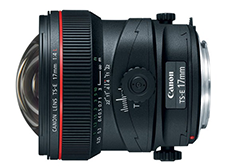
Tilt-shift lenses are specialty wide-angle lenses used to control perspective in an image. They are most commonly used for landscape and architectural photography and have a fixed focal length. Tilt-shift lenses have knobs which change the angle of the lens vertically and horizontally to counteract the effects of perspective, such as a tall building appearing to get skinnier towards the top.
Caring For Your Lens & Appropriate Storage
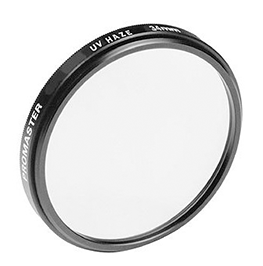 When caring for your camera lenses, observe these best practices:
When caring for your camera lenses, observe these best practices:
- Clean the glass to avoid costly repairs.
- Only use appropriate lens cleaning cloths and solutions designed for lenses.
- Clean the rear and front elements using a soft brush to remove any dust or unwanted particles.
- Clean between each moving part.
- Clean and store your camera maintenance tools in an appropriate storage container.
- Consider using an inexpensive UV filter to both enhance your images and protect the surface of the lens.
When storing your lenses always remember to:
- Remove the camera lens from the camera.
- Always use lens caps of both ends of the lens.
- Make sure the camera lens is in a air tight storage container, ideally with silica gel packets to absorb moisture.
- Store the lenses in cool and dry location, away from temperature fluctuations and moisture.
Next Steps
There is no magic formula to buying a camera lens that will allow you to photograph from every angle with perfect image quality. You always must decide what your needs are and which camera lens will help you achieve your objective. The best way to choose your lens it to make sure it is within your budget, that you have a need for that specific lens, that you have the right amount of education and experience to use the lens, and you have the right make and model to fit your DSLR camera.

|
|

|

|
![]()
Contents of all material on website ©2025 Camcor, Inc. All Rights Reserved.